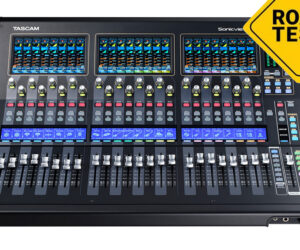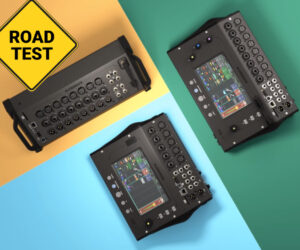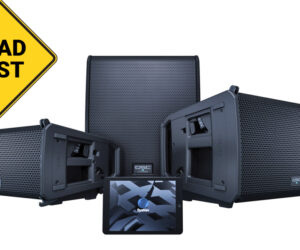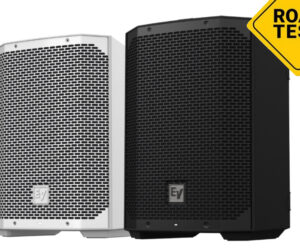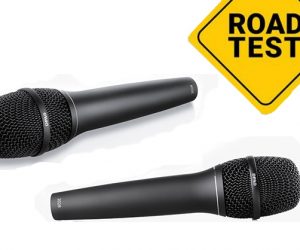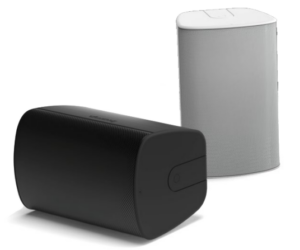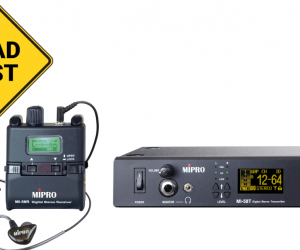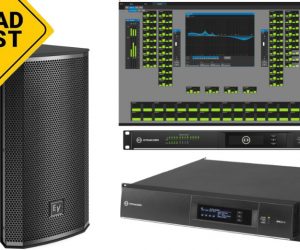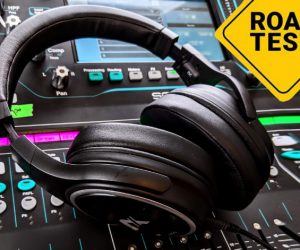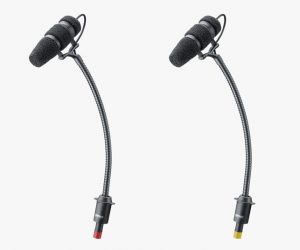Earlier this year, Yamaha introduced the TF-RACK, a compact rack-mount version of the company’s TF Series digital mixing consoles.
Offering all of the features found in TF Series desktop models designed for both newer and more experienced users, the rack-mount version is primarily designed for smaller and portable applications.
The entire platform offers time-saving performance capabilities, such as fast, accurate gain setup, single-step compression and EQ, and microphone specific presets.
That all seems fantastic, but how well does it actually accomplish the intended tasks, and how user-friendly is it really? With these questions in mind, I agreed to take it for a test drive.
Right out of the gate, I informed the fine people at Yamaha that they were dealing with an old-school analog guy, and thus I might not be the best choice as a reviewer of their latest digital tool. Their response? “The TF Series is especially relevant in your case, because these mixers are actually geared in part to work as transition tools for those with analog backgrounds to make the jump to digital.”
Thus we agreed to drop this little chunk of advanced audio technology into the lap of a graybeard with minimal digital mixing experience. What could possibly go wrong?
Getting Acquainted
Initially, the concept of a complete digital mix system that fits into three rack spaces seemed ominous and maybe even a bit ridiculous to me. Honestly, if the hype turns out to be accurate, most small and midsize venues won’t need anything other than powered loudspeakers and the show is set. So let’s dig in and find out.
Upon powering the TF-RACK up for the first time, the touch screen quickly identified itself and offered me the potential to manage 32 mono inputs, 2 stereo inputs and 2 returns, with 16 assignable outputs through an inexplicably clean and minimalistic group of front-panel controls.
My first actions were to load the StageMix app onto my vintage second-generation iPad and begin the process of cursing under my breath as I was reminded of my age and level of technical savvy. My ambitions of firing it up and mixing myself into a frenzy, without that aid of the manual, were instantly dashed with complete disdain for my delicate ego.
To me, that qualifies as strike one. Any piece of gear that requires me to study a manual the size of a phone book just to get some noise in the room is already quenching my enthusiasm.
With somewhat arrogant and mindless resolve, I pressed on in search of strike two.
Even without the aid of the app, I found easy access to every parameter was available on the front panel. Each channel allows total control of the extensive features. Touching an input channel gives access to the recallable D-PRE recording-grade preamplifiers along with gain, phantom power, gating, compression, and direct out through a very simple interface.
In addition to all of that new-fangled technology, the TF-RACK also offers eight DCA groups, eight effects and 10 graphic EQs. Each seems to be a well-designed tool that is extremely user-friendly. The Touch and Turn knob on the surface gives instant control of any selected parameter. (Another very intuitive feature, since older engineers really love their buttons and knobs. Thanks for that one.)
The unit also offers plenty of user-defined options. Six buttons and four knobs, with preset functions, seriously sped up the process by getting me into the ballpark without tinkering on every available processor.
The user-defined knobs, labeled A,B, C, and D, default to gain, EQ, gating, and compression, while user-defined buttons (keys) default to recallable scenes. Again, very cool of Yamaha to think this one through. Maybe we really are well on the road towards idiot-proofing digital for graybeards after all.
Kicking Into Gear
With the primary objective of getting a condenser mic and guitar to make noise through an archaic amplifier, I began making the obvious connections. Five minutes later, nothing.
Of course, this was moving me closer to screaming “strike two” and disregarding many years of bullet-proof Yamaha products along with the fond memories of shows they supported me through.
But in the midst of this short bout of frustration, I managed to gather my thoughts and recall the claim this platform is ideal for analog people. With that, I went for the logical approach, and there it was. Mutes engaged in the output section were staring right at me.
From there, it just kept picking up speed. I pushed buttons and turned knobs to my heart’s content in between swiping and tapping various screens. Each parameter proved itself effective and the workflow proved to be very well implemented.
And did I mention clean? The sound quality was honest and pure. I don’t think it would be unreasonable to expect some impressive live recordings from the TF-RACK. My experimenting showed this to be a serious player for a wide variety of applications. It seems like the features, sound quality, and ultimately, ease of operation, are indeed ideal for any small to average-size church, school, or venue.
After reluctantly going back through the manuals, I discovered the ability to record and play back 34 tracks, for virtual soundcheck, capturing live shows, or maybe just an “accidental” bootleg. (Not that any of us has ever done such a thing.)
Taking things a step further, I poked around the Yamaha website and discovered that the StageMix and MonitorMix apps weren’t the only control tools out there. There’s also the TF Editor program to drive the TF-RACK from a Mac or PC. For those of us who dislike squinting at touch screens and attempting to navigate tiny menus with our caveman fingers, all three place the controls on a much larger surface. Complaint resolved.
The Bottom Line
If you’re one of the remaining techs left who hasn’t enjoyed wandering aimlessly while mixing on your iPad or iPhone, all I can say to you is “wow.” The freedom to tune a system, balance stage monitors, EQ that vocal that isn’t quite present, dial in the kick drum compression, and even run the entire show from the best (and worst) seats in the house, is a little mind-blowing.
The Yamaha TF-Rack rack-mount mixer left an impression that won’t soon be forgotten. And with a street price around $1,800, it plays a strong hand towards becoming a great first choice or retrofit for archaic analog systems — especially when you consider how much outboard gear simply isn’t needed anymore, not to mention the sound booth or mix position.
Well played, Yamaha.





